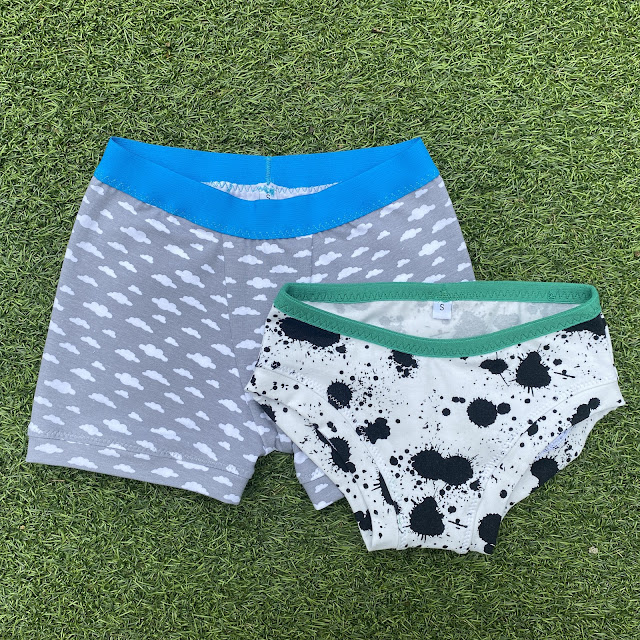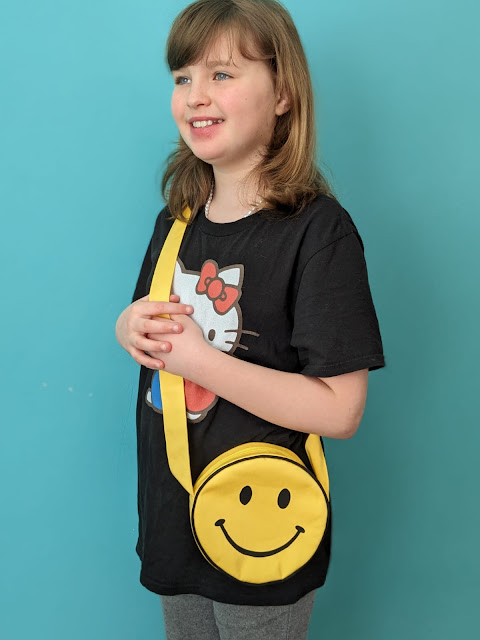Welcome to my monthly 'Free Pattern Friday' feature, where I road test a free sewing pattern or tutorial: sometimes a children's one, sometimes an adult's one. I try to publish these posts every first Friday of the month, timed to provide inspiration for those who plan to get their sew on over the weekend. I firmly believe that, if you pick your projects carefully, sewing doesn't have to be a crazy-expensive way to clothe yourself and your family. Thanks to all the amazing pattern designers who have offered up their hard work for us to enjoy for free.
I'm guessing that most sewers who have been at it for a while are aware of the wonderful treasure trove that is Peppermint Magazine's sewing pattern collection. With each edition of the Australia-based magazine, they work with an independent pattern designer to produce a sewing pattern that gets included with that issue. All the previous patterns are also available via their website. They all used to be free, but more recently they have introduced a pay-what-you-can system, which I love.
The Wide-Strap Maxi Dress pattern, produced by Lauren Boyle from pattern brand Elbe Textiles, caught my eye some time ago but I wasn't really sure if it was 'me'. But at some point I realised that it could be worn like a pinafore with a T-shirt underneath, plus I could shorten it so I wouldn't feel like I was drowning in fabric. I am in the lucky position to be able to afford sewing patterns, so I picked one for the paid options. I would really like to encourage anyone who can afford to pay to do so. It helps keep this wonderful magazine, and it's collection of fantastic patterns, afloat. But if you really can't afford to pay for the pattern, don't feel guilty for accessing it. See if you can support them in other ways, for example by posting about the pattern and magazine on social media. Massive thanks to both Peppermint Magazine and Lauren Boyle for creating and making this pattern available for the community to enjoy. Also, big thanks to Ruby for taking these pro photos of me in my dress!
Pattern type:
The pattern is for an A-line maxi dress with side splits and a elasticated back. I shortened the length by about 20cm so mine isn't quite as 'maxi'.
Sizing info:
The pattern is graded from 30" bust to 51" bust. My measurements put me in the 'D' size, but when I tried it on near the end of construction, I found it very loose around the bust. Thankfully, this is very easy to adjust, you just need to make the elastic tighter at the back.
Fabric info:
There isn't much guidance given on fabric selection. There's nothing on the webpage, other than a link to the particular linen they've used for the sample photographed. In the instructions PDF is specifies 'Midweight woven fabrics – linen, cotton, hemp, rayon'. For my version, I used the Riviera viscose & linen blend in 'Olive' from Fabric Godmother (not sponsored but I get a staff discount). Aside from needing to be ironed every two minutes, I think it was a great choice for this pattern. My initial fear was that it might be too lightweight, but it has such a nice drape and feels very breezy on hot and sticky days.
I bought a cone of Tencel thread from James Tailoring. So aside from the elastic at the back, this garment is, theoretically, biodegradable.
Findings:
As with the other Peppermint Magazine patterns I've tried, I found this pattern to be very well produced. I love that the pattern file includes the layers function so I could specify which size I wanted when I got it printed in A0 format. The instructions are lovely and clear, with very helpful diagrams to illustrate the steps.
The construction method for this project is really fun. It looks like a really simple garment, but the designer walks you through creating a really lovely finish with french-seamed everything! To my surprise, I didn't use my overlocker to finish a raw edge once. It makes this simple-looking garment really elevated. That said, there is a down-side with the method: there are practically no opportunities to assess and adjust the fit or length until it's practically finished. You're going to have to make a toile/muslin (I did not) or baste/tack everything together first to be able to assess the fit and length.
Customisation ideas:
Here's some ideas to get more from this pattern:
- cut the length even shorter for a mini-dress or top
- ignore the in-seam pockets and add patch pockets at the thigh, and even to the front bib area, for a more utilitarian look
- make the straps narrower for a more delicate look
- cut the bodice around the waist and add a gathered skirt or gathered peplum
- insert gathered frills into the seams of the straps
Would I make this again?
I'm low-level keeping my eyes peeled for a drape-y lightweight denim type fabric to make another in. It'd be tempting to add gold/orange top-stitching to give a nod to classic denim garment.













































